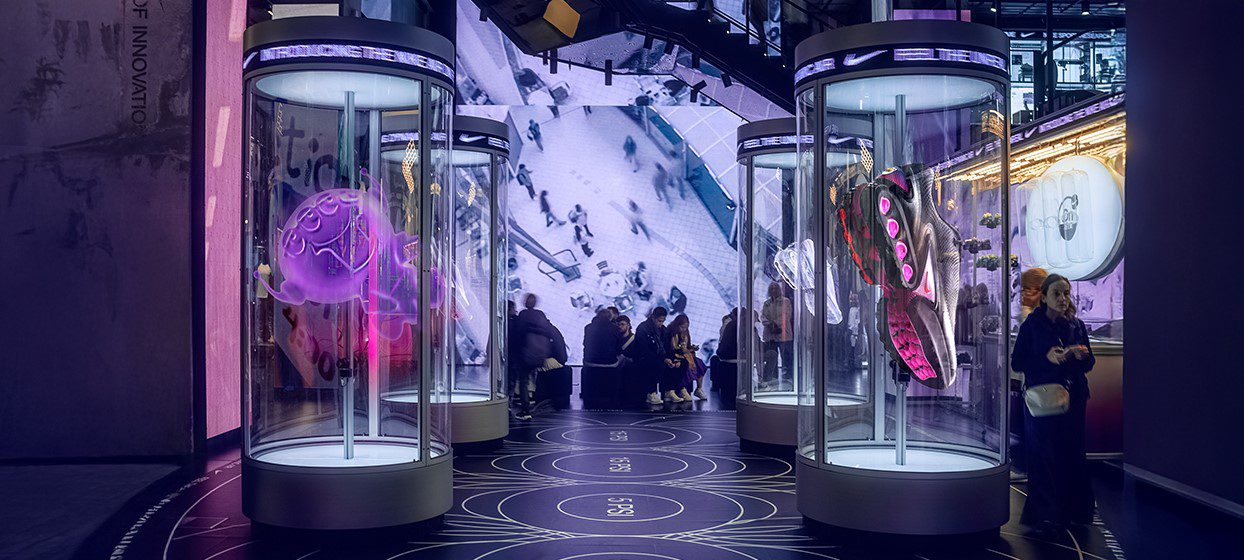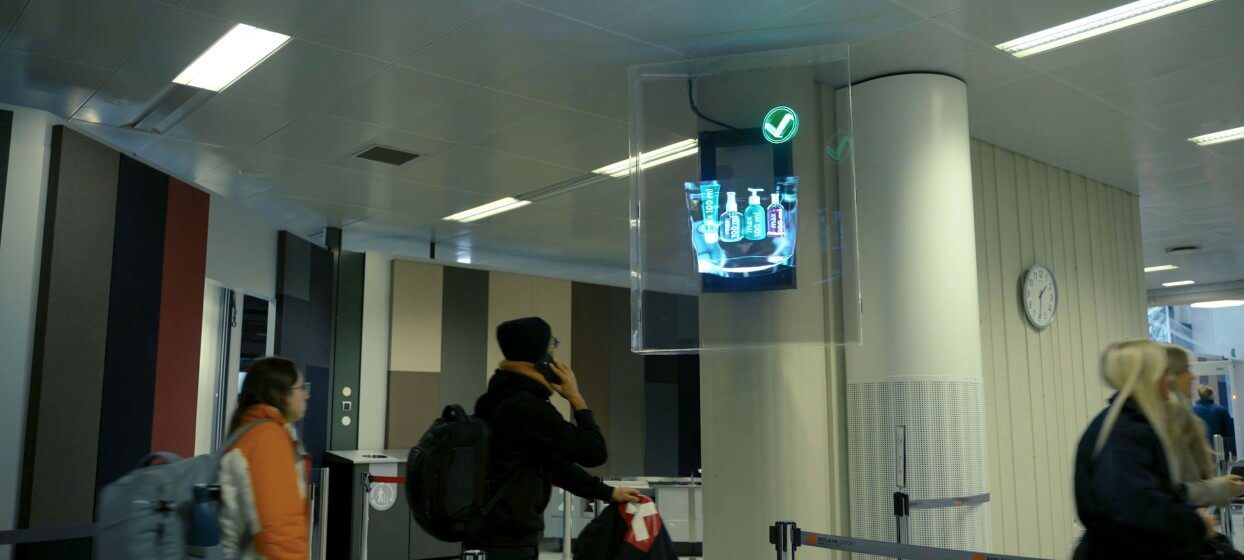
HYPERVSN 3D Catalog
USD 1,200
Qty

HYPERVSN 3D Catalog
USD 1,200
Qty

HYPERVSN 3D Catalog
USD 1,200
Qty
Cart Subtotal:
USD 3,600

Astrid Pocklington
Head of Demand Generation
Mannequins date back to Ancient Egypt, where individuals posed in garments most notably for the Pharaohs of the time. The lifeless and inanimate versions we see today date back to around the 18th century Industrial Revolution, when the new mass market of clothing production and fashion for pleasure, not simply necessity, emerged and moved them into the commercially available arena.
Since then mannequins have reflected the beauty standard of their time, with the 50’s representing the hourglass figure made famous by Marilyn Monroe, the 60’s moving into the boyish shape Twiggy was known for, and the 90’s going even further with the thin and slim look popularised by catwalk models like Kate Moss. It is only recently in the tail end of the 20th century where mannequins have started to reflect the diversity called for by cultural trends like the Body Positivity movement. However, this hasn’t gone far enough.
Now, with the emergence of digital mannequins and their ability to accurately reflect the true face of today’s society with all the various ethnicities, features and body shapes, the role of the mannequin is undergoing a significant transformation, and is revolutionising the way customers see themselves. Acceptance, appreciation and adoration are widening the net of what digital mannequins can do, and in this article, we’ll take a look at how this innovative technological evolution in the Retail industry is reshaping how we see ourselves as consumers, how we see ourselves reflected within our favourite brands, and how we engage with those brands that we know and love.
Digital mannequins are redefining how consumers engage with retailers, specifically within the Fashion and Beauty industries. Traditionally, these industries have been dominated by tall, slim white and faceless mannequins, alienating large swathes of the population and leading to increased body image, self esteem and negative psychological issues, especially within younger demographics, thanks to their wholly unattainable aesthetic. Brands such as Nike and Fenty began introducing plus sized mannequins into their campaigns over the last few years to showcase the diversity of their consumers, to challenge the societal ‘beauty norms’, and promote the body positivity movement. However, this was met with criticism from some who believe that fashion and beauty should be aspirational, not necessarily realistic.
Innovative solutions like 3D holographic technology, digital avatars and augmented reality mirrors are challenging the notion of ‘aspirational beauty’, and are bringing accessibility, relevance and acceptance back into the world of retail for the everyday consumer. Enriching campaigns and product showcases with the use of a diverse collection of digital mannequins representing the different body shapes, ethnicities and sizes across genders dramatically enhances the customer experience. Via this approach, customers can easily identify with these representations and build much deeper and more authentic connections with a brand.
Retail innovation agency, Outform, have launched Digital Mannequin, their latest retail solution which brings inclusivity, personalisation and engagement to the forefront of the customer’s shopping experience. Shoppers can interact with these digital displays by scanning a QR code allowing them to select the body type that mirrors their own, enabling them to visualise how the clothing items they’re considering would look on them before making a purchase. It sounds simple enough doesn’t it, but this is a huge step for retail, allowing real time customisation and providing huge purchasing motivation that not only increases customer dwell time and engagement, but also revenue for brands.
While it may lack the futuristic 3D holographic layer that sets HYPERVSNs Holographic Human solution apart from the rest, Digital Mannequin brings that much needed diversity and personalisation that customers have been crying out for, and ushers in a new world of merchandising that will change the game for visual merchandisers and retail designers everywhere.
Back in 2019, Nike began to include plus size mannequins into their stores across the UK and US with mannequins that fit the more realistic body image of an average UK/US woman. It was a bold move by a company known for welcoming controversy, a brand determined to show their inclusivity and appreciation of their female customers from all walks of life, of all shapes and sizes, and was launched to a huge round of applause from body positivity activists and the general public. While these mannequins were simply more realistic versions of the traditional static mannequins, they were the first step in brands attempting to reflect a more accessible and commonly seen body shape. As a nationwide survey confirmed, 82% of respondents said that it showed a long overdue and necessary representation of larger bodies. This celebration of the myriad body shapes we see across our society, was the first step for a major brand to kick off the democratisation of fashion & beauty, giving women of all sizes the chance to see themselves truly reflected in their favourite brands.
The transition into digital mannequins is the logical progression for brands like Nike, enabling them to embody their inclusive values by showcasing dynamic and engaging models of various shapes and sizes in their stores. This would solidify their commitment to representing the real female bodies their customers want to see, encouraging greater brand advocacy and driving increased spending.
Outform’s Digital Mannequin platform above takes this one step farther by allowing customers to choose the body type they want to see, making it a truly configurable and personal shopping experience, and this is something that Nike and other brands should take note of. The simple ability to find someone who looks like you modelling the clothing or beauty they want to purchase is a hugely motivating factor, and celebrates the diversity and beauty of our society without alienating women in the process.
A study in 2017, Emaciated mannequins: a study of mannequin body size in high street fashion stores, took a forensic approach to analysing the body types reflected on the English high street, and the worrying effect it’s had on the public. To summarise, it found that out of the entirety of the female and male mannequins they assessed, 100% of the female mannequins body types were severely underweight, while just 8% of the male mannequins were classified as such.
They noted that this female body representation promoted a medically unhealthy body type, and went on to state that it’s a well recognised fact that the ‘internalisation of ‘ultra-thin’ body ideals in women acts as [a] risk factor [for] the development of eating disorders and impaired psychological well-being.’ The report went on to say ‘there has been public concern that the typical size of high street fashion store mannequins used in England represents an unrealistic body size for women[,] and this may communicate inappropriate body size ideals.’ This issue has been well known for a number of years, and gives retailers hard facts to back up their use and installation of digital mannequins to combat this endemic issue. Seeing a wider variety of ethnicities, body shapes and sizes represented across the spectrum of fashion and beauty brands would not only help to greatly diminish the ultra-thin body ideal that has long been revered in our culture, it would enhance the retail industry with greater customer engagement, advocacy and ultimately revenue spent on items that customers can genuinely see themselves in.
The beauty of digital mannequins is their configurability; the ability for designers to put literally any model representing any shape or size into a digital space. The reactivity of this technology allows brands to reshape the narrative in an incredibly simple way; by updating their digital models they can demonstrate to their customers their commitment to keep their wellbeing, both mental and physical, at the heart of their shopping experience. It’s all too common an occurrence that women, in particular, will go into a store for an item, see it draped onto an unrealistically sized mannequin, and leave the store without making the purchase feeling defeated, judged and ‘less than’.
A 2015 report looking at the effect mannequins have on consumer purchasing found that ‘[…] consumers are more likely to purchase if they have a favourable attitude toward the brand and claimed that a consumer’s perception of a brand is key to the formation of their purchase intention. [That] because the mannequin does not “look like” the shopper, she feels that the product is not for her.’
Outdated and unrealistic beauty standards are holding brands back from fully connecting with their customers. Installing digital mannequins in-store to help combat this lack of diversity in the realm of body image is a crucial step to winning the custom and trust that they need to outperform their competition.
The use of digital mannequins in the retail space is heralding a seismic shift in the way brands build lasting and powerful relationships with their customers. Now that retail spaces are becoming more of an experience centre for their consumers, this interactive and engaging digital mannequin evolution plays a huge part in the democratisation and proliferation of realistic and healthy body types, both for consumer’s mental and physical wellbeing. If brands want to stand heads above their competitors, they need to embrace this digital evolution and prioritise diversity and inclusivity in their merchandising strategies. They must showcase a future where every body is embraced, welcomed and celebrated in their retail space.



subscribe

USD 1,200
Qty

USD 1,200
Qty

USD 1,200
Qty
Cart Subtotal:
USD 3,600☎️